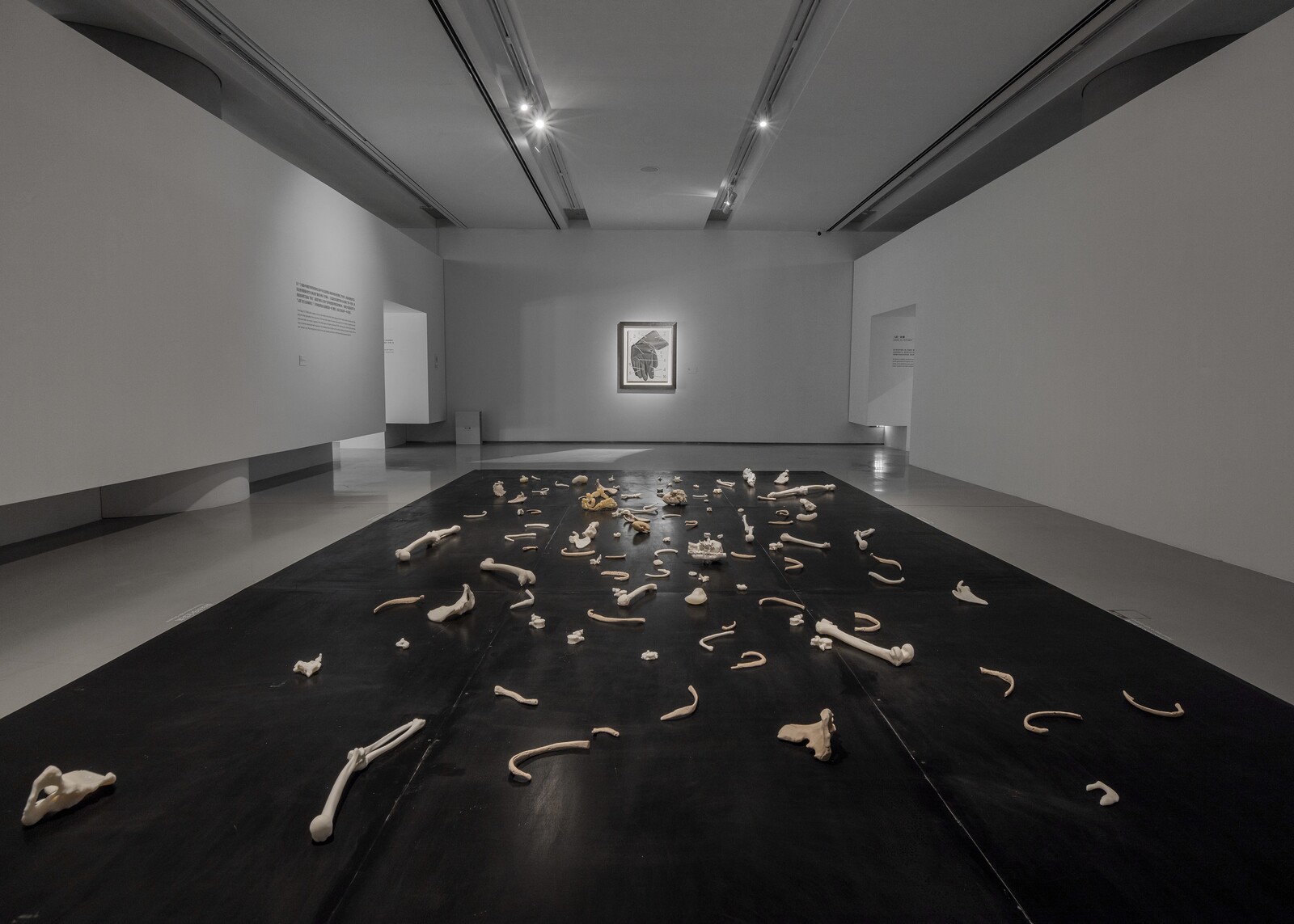2011.4.27-Permanent
August 24–October 31, 2024
Taikang Art Museum, 1-2F, Building 1, Yard 16, Jinghui Street, Beijing Taikang Group Building
100026 Beijing
China
Hours: Tuesday–Sunday 10am–5:30pm
media@taikangartmuseum.com
Taikang Art Museum hosts the solo exhibition 2011.4.27—Permanent by Zhang Peili, renowned as the “father of Chinese video art” and as an influential new media artist, from August 23 to October 31, 2024. This exhibition focuses on body, identity, and personal experience for the first time. It features over 30 pieces/sets of works across various media such as paintings, videos, performances, installations, sculptures, and composite materials, supplemented by manuscripts and video archives. The exhibition aims to systematically explore and showcase the artist’s remarkable career from 1984. 2011.4.27—Permanent is curated by Tang Xin, the artistic director of Taikang Art Museum, and Hu Hao, a curator at Taikang Art Museum.
The exhibition title 2011.4.27—Permanent is taken from the validity period of the artist’s ID card, indicating that the exhibition content relates to the various imprints left between the individual and societal systems, as well as the deep reflections these encounters provoke. The exhibits include multiple pieces from the X? series (1986–1987), masterpieces such as 30 × 30 (1988), (Wei) No. 3 (1991), and Personal Hygiene (1998), which have occupied a place in world contemporary art history and important exhibitions, video installations such as Related Beats (1996), which are rarely displayed and invite audience interaction, as well as recent works that, while starting from individual perspectives, directly address contemporary issues, such as Passport and Endorsement (2014), and Organs and Bones (2019).
Unlike Zhang’s previous exhibitions, 2011.4.27—Permanent is not arranged chronologically. Instead, it stimulates new experiences for the audience through the parallel display of new and old works. At the exhibition’s entrance, the curtain installation Data on Lungs, Gallbladder, Common Bile Duct, Arteries, Pulmonary Arteries, and Pulmonary Nodules (2019), printed with the artist’s body data code, will appear and disappear under changing lights. This piece forms a central “trinity” axis with The Code (2019), which displays the artist’s ID number on fluorescent paper, and 30 × 30 (1988), considered China’s first video artwork. Complementing this arrangement are the oil painting of X? (1986, oil on canvas) and the Agate Head from the Viscera series (2019), symbolizing the consistent “body” theme running through Zhang’s career. In his view, an individual’s body and the experiences attached to it are the wellspring of artistic creation.
About the artist
Zhang Peili was born in Hangzhou in 1957 and graduated from the Zhejiang Academy of Fine Arts (now the China Academy of Art) in 1984. He is currently a professor at the China Academy of Art and once was the Executive Director of OCAT Shanghai. Zhang organized and participated in the “85 New Space” exhibition and “Pond Society” activities in 1985 and 1986. His work 30 × 30 (1988) is regarded as the earliest video artwork in China. He established the New Media Department at the China Academy of Art in 2003, starting the earliest new media art education in Chinese art colleges. Zhang has participated in important international exhibitions such as the Venice Biennale, Lyon Biennale, Sydney Biennale, Kwangju Art Biennial, and Busan Biennale. He has held solo exhibitions at the Museum of Modern Art in New York, the Art Institute of Chicago, and the Stedelijk Museum voor Actuele Kunst in Belgium. He has held solo exhibitions at prestigious institutions such as the Museum of Modern Art in New York, the Tate Modern in London, the Guggenheim Museum in New York, the Guggenheim Museum in Abu Dhabi, the National Centre for Art and Culture Georges Pompidou, the Art Institute of Chicago, the Asia Society in New York, the National Gallery Singapore, the Queensland Art Gallery in Australia, the M+ Museum in Hong Kong, the Fukuoka Asian Art Museum, the National Plastic Arts Centre in France, the Minsheng Art Museum (Shanghai), the Daimler Art Collection in Germany, the DSL Collection in France, the K11 Art Foundation in Hong Kong, and the Sifang Art Museum (Nanjing).








